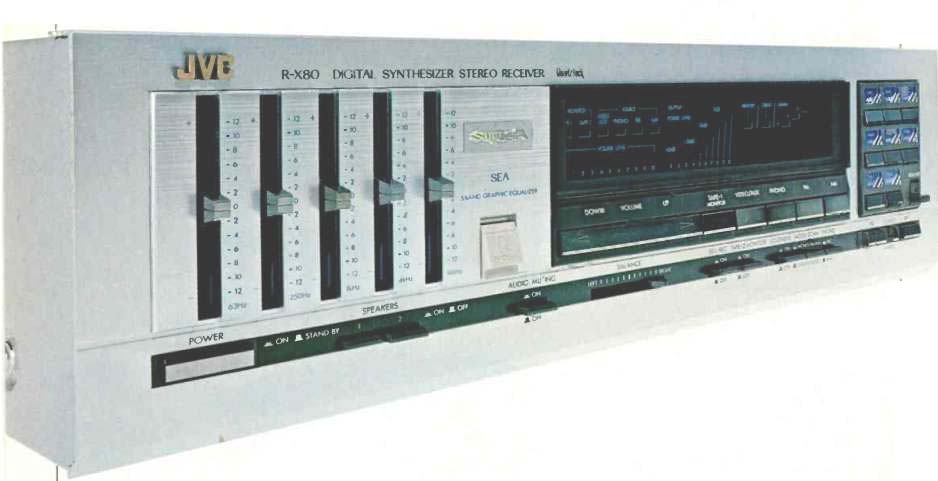
Manufacturer's Specifications:
FM Tuner Section
Usable Sensitivity: Mono, 10.3 dBf (1.8 µV/300 ohms).
50-dB Quieting Sensitivity: Mono, 14.8 dBf (3.0 µV/300 ohms); stereo, 37.2 dBf (40 µV/300 ohms).
S/N: Mono, 83 dB; stereo, 74 dB.
THD: Mono, 0.1% at 1 kHz; stereo, 0.15% at 1 kHz.
Frequency Response: 30 Hz to 15 kHz, +0.5, -0.8 dB.
Alternate Channel Selectivity: 75 dB.
Capture Ratio: 1.5 dB. Image Rejection: 80 dB.
I.f. Rejection: 100 dB. Stereo Separation: 45 dB at 1 kHz.
AM Tuner Section
Sensitivity: 50 µV/meter.
Image Rejection: 50 dB.
If. Rejection: 60 dB.
Distortion: 0.5%. S/N: 50 dB.
Amplifier Section Power Output: 70 watts per channel, 8-ohm loads, both channels driven, 20 Hz to 20 kHz.
Rated THD: 0.008%. SMPTE IM: 0.008%.
Damping Factor: 45 at 8 ohms, kHz.
Sensitivity for Rated Output: High level, 240 mV; MM, 2.5 mV; MC, 250 µV.
Frequency Response: Phono, RIAA ±0.5 dB; high level, 5 Hz to 50 kHz, +0,-1.0 dB.
S/N: High level, 75 dB; MM, 80 dB.
Graphic Equalizer Center Frequencies: 63 Hz, 250 Hz, 1 kHz, 4 kHz, and 16 kHz.
Graphic Equalizer Control Range: ± 12 dB.
Loudness Control: +7 dB at 50 Hz, +4 dB at 10 kHz, at -40 dB volume control setting.
General Specifications:
Power Requirements: 120 V a.c., 60 Hz.
Dimensions: 17 1/8 in. (43.5 cm) W x 4 3/8 in. (11.7 cm) H x 15-11/16 in. (39.8 cm) D.
Weight: 20.9 lbs. (9.5 kg).
Price: $570.00.
Company Address: 41 Slater Dr., Elmwood Park, N.J. 07407.
JVC was promoting the idea of graphic equalizers long before this type of tone control refinement appeared as a consumer product in component form, and certainly long before integrated amplifiers or receivers with built-in graphic equalizers appeared. It's still an unusual feature to be found in a receiver, let alone a unit with a suggested retail price under $600, but this top-of-the-line receiver has one.
JVC, however, insists on calling it an "S.E.A." equalizer, which stands for "Sound Effects Amplifier," believe it or not.
There are other advanced features about this receiver worth noting. The tuner section uses quartz-PLL, digital frequency-synthesized tuning with eight FM and eight AM presets. The R-X80 employs a high-gain equalizer that accepts both moving-magnet and moving-coil cartridges. Other features are a motor-assisted volume control and large fluorescent displays for power output, tuner frequency, signal level, stereo reception, and source selection. A wired remote-control unit is supplied, and it allows you to control program source selection, select the tape 1 monitor loop, adjust volume, and tune up/down for AM or FM stations.
Control Layout
JVC was, to the best of my recollection, the first company to come up with a receiver control panel completely free of projecting rotary knobs, which made for a very handsome and clean-looking design. Happily, they have continued that approach in this latest model. The five-band graphic equalizer's calibrated slide levers are located at the left end of the panel, and just below them are a power on/off pushbutton and two speaker-selector push buttons. One or two sets of speakers may be activated at one time. The headphone jack, also in this area, is concealed by a flip-up plastic cover--an aesthetic touch, I suppose, designed so a phone jack hole would not gape on the otherwise uninterrupted panel expanse.
A muting switch, slider balance control, S.E.A. record switch (which places the graphic equalizer circuitry ahead of the record-out jacks), tape 2 monitor switch, loudness switch, mode/scan switch (which selects automatic or manual step-by-step scanning during tuning and also mono or stereo reception), MM/MC phono switch, up/down tuning buttons, and a memory button are all arranged along the lower edge of the front panel. A bit higher up, below the major display area of the panel, are a volume up/down rocker bar, the tape 1 selector, and four additional program selector buttons (video/AUX, phono, FM and AM). Selected volume level is indicated by a series of fluorescent bar indicator lights in the display area, which also incorporates a three-step signal-strength meter, a power-output meter (calibrated in dB below rated output), the digital frequency indicator (which also tells you whether you are listening to AM or FM), and an assortment of other indicators (source, stereo, tape, and memory). When the "memory" indicator illuminates, the tuner is ready to preset frequency information for future instant recall of desired stations.
The rear panel of the JVC R-X80 receiver is equipped with the usual phono and high-level input jack pairs, tape-output jacks, antenna-input terminals (300and 75-ohm for FM, ground and AM for external AM), polarized speaker terminals for connection of two pairs of speaker systems, a pair of auxiliary a.c. outlets, and a multi-pin socket for connection of the wired remote-control unit. An AM loopstick is installed in a universal ball joint so that it can be positioned at any angle for best AM reception. An AM channel-spacing switch is also found on the rear panel. Many European countries have adopted 9-kHz spacing between AM channels, whereas the countries of the Western Hemisphere, including the U.S. and Canada, maintain 10-kHz spacing.
Since the AM section of this receiver tunes by discrete channel increments, it was necessary to provide a switch for selection of the appropriate channel spacings. Tuning for FM, incidentally, is in 100-kHz increments for the U.S. version of the receiver, even though our channel spacing is at 200-kHz intervals. Some cable systems are positioning their optional FM signals at even-numbered 100-kHz increments (101.2, 101.4, etc.), while broadcast FM stations are all assigned odd-numbered 100-kHz increments (101.1, 101.3, etc.). Therefore, JVC's decision to have the frequency-synthesized tuner progress in 100-kHz increments was a wise one in my view. A line fuseholder completes the rear panel.
The R-X80's amplifier section utilizes JVC's "Super-A" amplifier circuitry which has been discussed in reviews of earlier JVC components. Super-A, JVC's low-distortion amplifier technology, utilizes an active or dynamic bias circuit.
This circuit varies the bias current applied to the output transistors of the power-amplifier section in accordance with the input level, reducing switching distortion and increasing amplifier efficiency. The circuit is a variation on the dynamic bias circuitry incorporated in many recent low-distortion amplifiers from several manufacturers, each claiming its approach is better than that of its competitors. I suppose if ultra-low, statically measured distortion is the criterion by which these circuits are judged, then JVC's version is among the best.
FM Measurements
Usable FM sensitivity in mono measured 10.8 dBf (1.9 µV/ 300 ohms), close enough to the claimed 10.3 dBf (1.8 µV) so that I won't quibble. Stereo threshold occurred at 25 dBf, making that signal strength the effective stereo usable sensitivity. Fifty-dB quieting in mono measured 13.5 dBf (1.6 µV/300 ohms); for stereo, the 50-dB figure was 38.0 dBf (43.7 µV/300 ohms). Under strong-signal conditions, signal-to-noise ratio increased to 80 dB in mono, 74 dB in stereo. I consider these to be very good results for a frequency synthesized tuner section of such a moderately priced receiver. Total harmonic distortion for a 1-kHz modulating signal was an amazingly low 0.04% in mono and an even more impressive 0.04% in stereo. Quieting and mid-frequency distortion, as a function of input-signal strength, are plotted in Fig. 1. Figure 2 shows graphic plots of harmonic distortion versus modulating frequency for mono and stereo operation of the FM tuner section. In mono, THD figures were 0.07% at 100 Hz and 0.15% at 6 kHz.
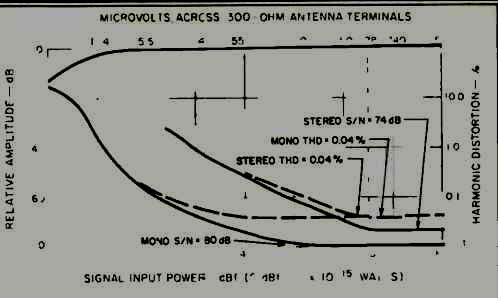
Fig. 1--FM quieting and distortion, mono and stereo.
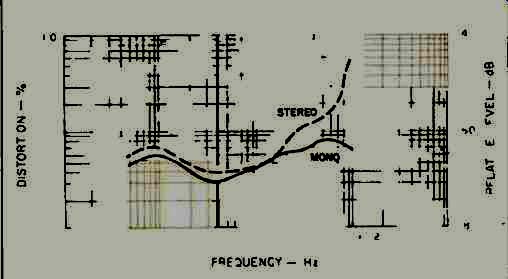
Fig. 2--Distortion vs. frequency for stereo and mono FM.
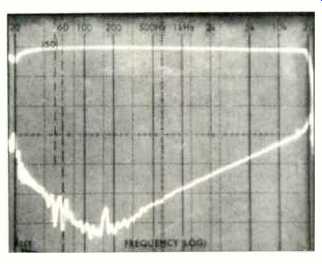
Fig. 3--FM frequency response (top trace) and separation vs. frequency.
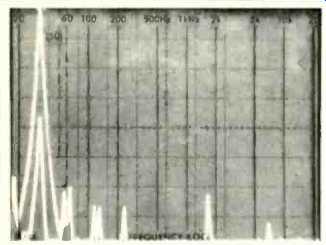
Fig. 4--Stereo FM crosstalk for 5-kHz modulation.

Fig. 5--AM tuner frequency response.
Figure 3 is a 'scope photo of a logarithmic frequency sweep made with a spectrum analyzer, from 20 Hz to 20 kHz. The upper trace represents stereo frequency response at the output of the modulated left channel, while the lower trace shows crosstalk, or separation, as measured at the output of the opposite (right) channel. At the specific test frequencies called for by the EIA Tuner Measurement Standards (100 Hz, 1 kHz and 10 kHz), I obtained separation figures of 51.5, 50.5, and 34 dB for the left channel and 49.0, 50.5, and 32 dB for the right channel.
Figure 4 shows what happened when I applied a 5-kHz modulating signal to one channel of the FM generator at 100% modulation level. The tall spike, seen at the left in this linear (0 Hz to 50 kHz) sweep, represents the desired signal. A second sweep was made while observing the opposite (unmodulated) channel output. It shows separation at 5 kHz (the short spike nestled within the taller one at the left) as well as such crosstalk components as harmonic distortion, residual 19-kHz output, and 38-kHz output.
Capture ratio measured 1.5 dB, as claimed. Alternate channel selectivity was 78 dB, somewhat better than claimed. Image rejection measured 85 dB, while i.f. rejection measured in excess of 100 dB. Although not specified by JVC, AM suppression measured an acceptable 58 dB. Spurious-response rejection was a very high 98 dB. Figure 5 is a plot of frequency response for the AM tuner section. It is not particularly impressive, but it is a bit better than that found on many other receivers, with the-6 dB cutoff point occurring at just over 3 kHz.
Power Amplifier and Preamplifier Measurements
The power-amplifier section of the JVC R-X80 receiver delivered just over 75 watts per channel for its rated THD of 0.008% when a 1-kHz test signal was applied. At the frequency extremes, however, power output was limited to the rated 70 watts per channel for that same level of distortion.
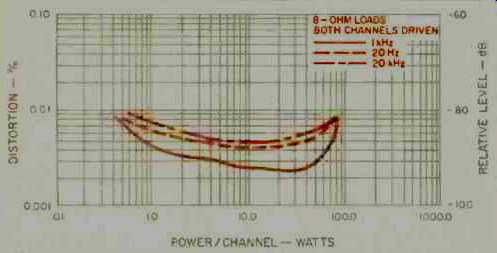
Fig. 6--Power output vs. distortion, 8 ohms.
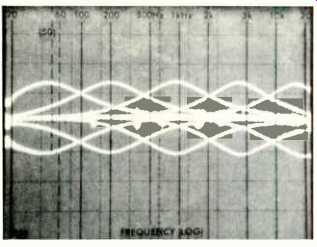
Fig. 7--Boost and cut range for the five graphic equalizer controls.
Figure 6 is a plot of harmonic distortion as a function of power output, for test frequencies of 1 kHz, 20 Hz and 20 kHz. Damping factor measured just slightly higher than the 45 specified, but I measure this parameter at a frequency of 50 Hz (with an 8-ohm load), while JVC's specification refers to a 1-kHz test signal (also with 8 ohms). Compared with some recently measured amplifiers, dynamic headroom was on the low side. It measured 0.83 dB, which means that for short-term signal peaks the amplifier can be expected to produce as much as 85 watts per channel without evidence of peak signal clipping. CCIF-IM distortion measured a minute 0.003%, while IHF IM measured exactly 0.03% at rated output. SMPTE-IM distortion at rated output was 0.008%, exactly as specified by JVC. Figure 7 is a 'scope photo showing the boost and cut characteristics of each of the R-X80's five graphic equalizer controls. Center frequencies for each control were extremely precise, as was the amount of available boost and cut for each control, which measured almost precisely ± 12 dB. Figure 8 is a plot of response at various settings of the volume control, with the loudness circuit activated. I was pleased to see that relatively small amounts of bass and treble boost are used in this circuit. Some manufacturers tend to overdo these fixed loudness-compensation settings, perhaps to make sure that the user will hear a big change in sound when the loudness switch is depressed.
Input sensitivity was 0.24 mV for the moving-magnet phono inputs, 0.024 mV (24.0 µV) for the moving-coil inputs, and 25 mV for the high-level inputs. All of these measurements were made with respect to 1-watt output rather than rated output. RIAA equalization was accurate to within 0.6 dB at the high end and to within 0.3 dB at the bass. Frequency response via the high-level inputs was flat within 1 dB from 5 Hz to 50 kHz, and within 3 dB from 3 Hz to 110 kHz.
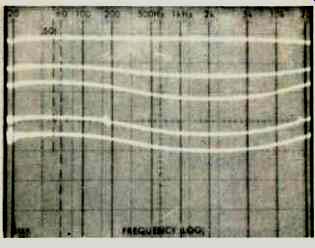
Fig. 8—Loudness compensation characteristics.
Signal-to-noise ratio for the MM phono inputs measured 78 dB, referred to a 5-mV input signal and 1 watt of power output. For the MC inputs, S/N measured 73 dB, while for the high-level inputs, signal-to-noise measured 80 dB, referenced to 0.5-V input and 1-watt output. Residual noise, with the volume control turned down to minimum, was 85 dB below 1 watt. Phono overload was on the low side, though marginally acceptable, measuring 100 mV for the MM inputs. Overload figure was proportionately better for the MC input, measuring 15 mV.
Use and Listening Tests
I particularly liked the action of the five-band graphic equalizer in this receiver. It is far more effective than any combination of bass and treble controls or even bass, treble and midrange controls. Even the purists among us will have to admit that there are instances when program sources (not to mention speaker systems and listening rooms) need a bit of help at the extreme bass and treble ends. The 63-Hz and 16-kHz controls of JVC's graphic equalizer are a tremendous aid here; they don't mess up tonal balance anywhere else in the spectrum.
FM reception was excellent, and I found the tuning to be precise, with minimum distortion always occurring when the frequency shown on my FM signal generator agreed with that shown on the display of the R-X80. I used the generator in a closed-circuit arrangement to listen to music via FM, and results were outstandingly good. This method eliminates the "unknowns" inherent in trying to test FM tuners using over-the-air material.
As for the amplifier section, it delivered extremely clean sound, particularly at low listening levels where some receiver amps tend to become a bit muffled or raspy in the sound they deliver to loudspeakers. Using speakers of medium to high efficiency, I think most listeners will find that the power output of the R-X80 is adequate, even when listening to Compact Discs with their wide dynamic ranges. If you own low-efficiency speakers, however, the 70 watts provided by the R-X80 (coupled with its relatively low dynamic headroom figure) may be a bit too low. Much will depend upon the level at which you play such discs.
My overall reaction to the R-X80 is one of wonder at how much JVC is able to offer for the under $600.00 price that, just a few years ago, would have delivered a low-powered set, with a conventional analog tuning system and dial, ordinary tone controls, and few, if any, of the useful displays which abound on the front panel. All this and good cosmetics besides make the R-X80 a receiver worth looking into--and listening to.
--Leonard Feldman
(Audio magazine, Nov. 1983)
JVC R-X500B Receiver (Dec. 1984)
JVC RX-9V A/V Receiver (Mar. 1987)
JVC S-300 FM Stereo/AM Receiver (Sept. 1976)
JVC Model KD-85 Stereo Cassette Deck (Nov. 1978)
= = = =